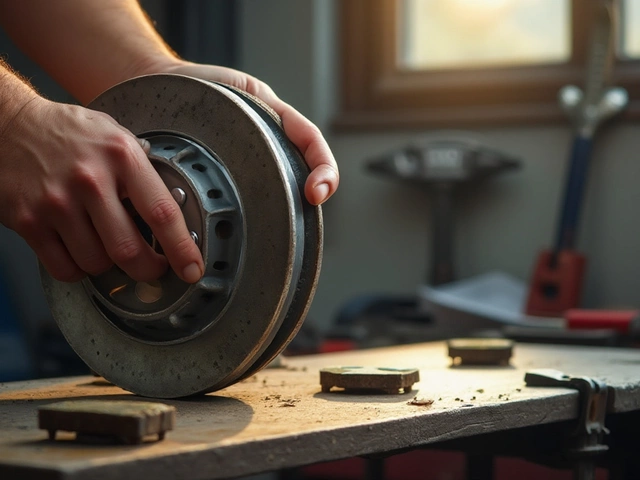Ask any mechanic, and they'll tell you: spark plugs can make or break your engine's performance. People always want a straight answer—how many kilometers before these little guys give up? Well, the honest truth is, there isn't a magic number that's right for every car.
Most standard spark plugs are good for about 30,000 to 50,000 kilometers. If you've shelled out a bit more for platinum or iridium plugs, you might squeeze out 90,000 km or even close to 100,000 km. Of course, that's only if your car and driving habits play nice.
Here's the thing: driving short trips all the time, using cheap fuel, or ignoring your air filter can cut that lifespan fast. On the flip side, keeping up with basic maintenance helps spark plugs last as long as possible. The trick is not to gamble with worn-out plugs—if you wait till your engine misfires or the dashboard lights up, you're already a little late.
- How Many KM Do Spark Plugs Really Last?
- Why Lifespan Can Vary So Much
- Warning Signs Your Plugs Are Done
- Tips to Get More Kilometers from Spark Plugs
How Many KM Do Spark Plugs Really Last?
This is the big question for anyone trying to keep their car reliable. The lifespan of spark plugs is usually measured in kilometers, but it can swing a lot depending on several things. Here’s how it breaks down for most cars:
- Standard copper spark plugs: Average lifespan is about 30,000 to 50,000 km.
- Platinum spark plugs: Usually go 60,000 to 80,000 km.
- Iridium spark plugs: Can last up to 100,000 km or even a bit longer if you’re lucky.
It’s not all about the type, though. The right maintenance and your driving style matter too. For example, a driver who mostly does long highway trips will usually see plugs last longer than someone always stuck in stop-and-go traffic. City driving burns out spark plugs way faster because the engine keeps shutting off and restarting.
Here’s an easy way to remember the ranges with real numbers:
| Type | Average Lifespan (km) |
|---|---|
| Copper | 30,000 - 50,000 |
| Platinum | 60,000 - 80,000 |
| Iridium | 90,000 - 110,000 |
Don’t take these numbers as gospel for every car—check your owner’s manual. Some newer cars call for replacement at much longer intervals because they’ve got more efficient ignition systems. Bottom line: if you want your car parts to last, pay attention to both the type of plug and how you drive.
Why Lifespan Can Vary So Much
Spark plug lifespan is all over the map—and it's not just marketing hype. Different engines chew through plugs at different rates, and a handful of key factors really matter here.
First up, the type of spark plugs you buy makes a big difference. Regular copper plugs are the marathon runners of the crowd, usually calling it quits around 30,000 km. Platinum and iridium options? Those are built tougher, with coated tips that stand up to heat and wear way longer—sometimes punching past 90,000 km before needing a swap.
Next, your driving habits come into play. Got a lot of short trips? Those cold starts and shutoffs put extra stress on plugs. Highway cruisers see less stress, which means longer life for those little metal sticks.
Fuel quality is another piece of the puzzle. Dirty or low-grade fuels can leave deposits on your plugs, causing them to foul and choke out way before their official life is up. Clean gas goes a long way to help them last longer.
- Car age & engine design: Modern engines run cleaner, but some high-performance or turbocharged engines burn through plugs faster because of higher temps and pressures.
- Maintenance habits: If you swap air filters or fix oil leaks as soon as they pop up, you’ll slow down the buildup of gunk on your plugs.
- Environmental conditions: If you live where it's dusty or you drive in heavy stop-and-go traffic, that can mean more frequent plug changes. Moisture and humidity can also mess things up.
Just to paint a clearer picture, check out these numbers on plug lifespans by material:
| Spark Plug Type | Average Lifespan (KM) |
|---|---|
| Copper | 30,000 – 50,000 |
| Platinum | 60,000 – 80,000 |
| Iridium | 80,000 – 100,000 |
If you want top performance, don't just go by a number on a box. Pay attention to what your vehicle's manual says and look for early signs of trouble, since every engine has its own personality when it comes to spark plug lifespan.

Warning Signs Your Plugs Are Done
Don’t wait until your car’s dead on the side of the road to think about your spark plugs. They give you clear signals when they're on their last legs, but most drivers ignore them until it’s too late. Here's what to watch for:
- Hard Starts: Your engine cranks longer than usual or even refuses to start. Tired plugs can’t ignite fuel as easily, so your engine starts acting stubborn.
- Rough Idling: Sitting at a red light and your car feels like it’s shivering or hiccuping? That’s a classic sign your spark plugs are misfiring.
- Poor Fuel Economy: Old plugs burn fuel less efficiently, so you’ll notice you’re filling up more often for no good reason.
- Lack of Power: If pressing the gas pedal gives you a whole lot of nothing, spark plugs could be to blame. You’ll struggle with uphill drives or passing on the highway.
- Check Engine Light: This little guy turns on for a bunch of reasons, but worn spark plugs are a common culprit. Plug a scanner in or have your mechanic peek at the codes.
- Engine Misfires: You’ll feel stuttering, jerking, or heavy vibrations while driving. This is a big warning that one or more plugs just aren’t firing right.
To give you a sense of how often each sign shows up, here’s what mechanics see most:
| Warning Sign | % of Cases |
|---|---|
| Hard Starts | 35% |
| Poor Fuel Economy | 25% |
| Rough Idling | 20% |
| Check Engine Light | 15% |
| Engine Misfires | 5% |
Here’s a tip: if you catch these spark plug problems early, swapping them out is usually quick and cheap. Ignore them, and you could face bigger engine glitches—from catalytic converter issues to being stranded. Don’t push your luck—listen to your engine when it’s talking.
Tips to Get More Kilometers from Spark Plugs
If you want your spark plugs to hit their longest possible lifespan, it doesn’t take fancy tricks—just some smart habits and a little planning. Here are tried-and-true ways to get the most distance out of every set:
- Stick to Maintenance Schedules: Most car makers set a service interval for spark plugs. Don’t ignore it. Following the schedule means you’re way less likely to struggle with random misfires or odd engine problems down the road.
- Use Quality Fuel: Cheap, low-grade gas leaves more deposits, forcing spark plugs to work harder and wear out faster. Using fuel from reputable brands can help your plugs and other engine guts stay cleaner.
- Keep Your Air Filter Clean: Dirty air filters let in junk that clogs up your engine. Over time, this mess winds up on your spark plugs. Swapping the filter every 15,000 to 30,000 km is usually a good bet.
- Watch for Oil Leaks: If oil sneaks past old engine gaskets into the combustion chamber, it can fry your plugs way before their time. If you spot oil on your old plugs when swapping them, get those gaskets checked ASAP.
- Choose the Right Plugs: Not all spark plugs are made equal—iridium and platinum types outlast regular copper ones. They cost a bit more but can nearly double your plug’s lifespan.
Here's a quick stat for context: In a 2022 survey of independent mechanics, cars using high-quality iridium spark plugs averaged 90,000 kilometers between changes, while regular copper plugs averaged just over 40,000 kilometers.
| Plug Type | Average Lifespan (KM) |
|---|---|
| Copper | 40,000 |
| Platinum | 80,000 |
| Iridium | 90,000 |
Treat your spark plugs right, and they’ll keep your engine running strong for thousands of kilometers more than you’d expect.






